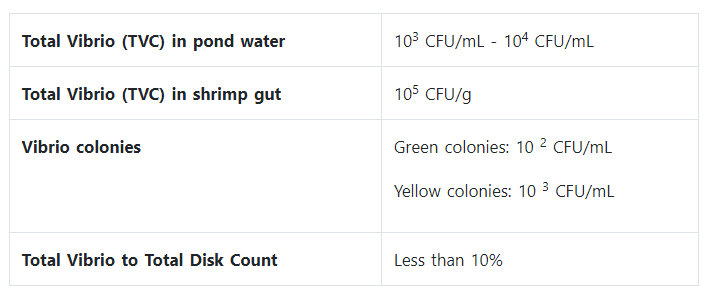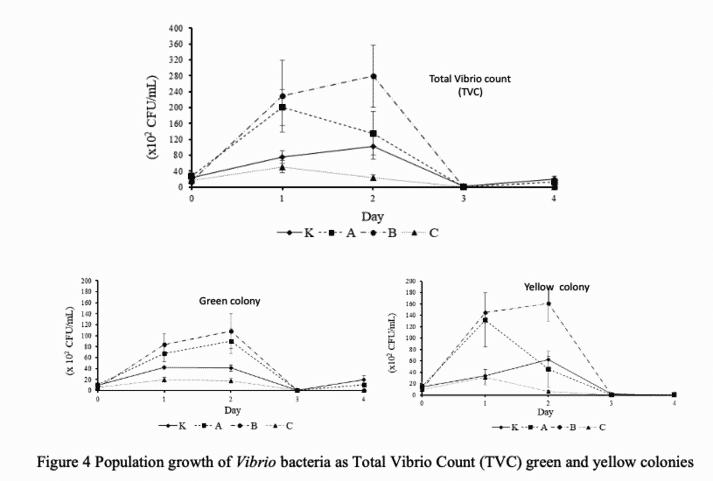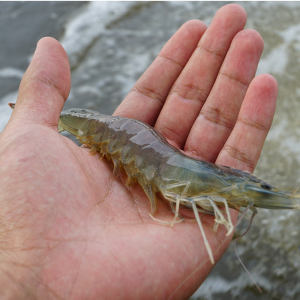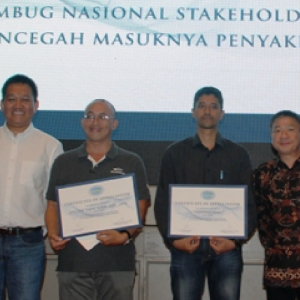
Methods of Controlling Vibrio in Shrimp Ponds
| Wed, 01 Sep 2021 - 13:48
Diseases caused by Vibrio spp. caused in shrimp at all stages, mortality can be up to 100% including diseases such as EMS, hepatopancreatic necrosis, EHP. Here are methods that can help farmers control Vibrio when raising shrimp.
Vibrio is an opportunistic pathogen that exists in the aquatic environment and is common in commercial shrimp ponds. When the weather changes, environmental parameters such as water temperature, pH, dissolved oxygen fluctuate, ponds contain high levels of organic matter and toxic gases. attack and can lead to mass death.
Some diseases caused by vibrio such as Vibrio harveyi causing glow disease are main pathogens that attack larval shrimp and cause mass mortality. V. vulnificus, V. fluvialis, V. parahaemolyticus, V. alginolyticus, V. damselae (Photobacterium damselae), V. mimicus, and V. cholera associated with white feces disease (WFD), have devastated shrimp farming in Vietnam. Vietnam and other shrimp producing countries in the world.
Read more: Can Shrimp Diseases be Beaten by Bacterial Interference?
Measures to limit Vibrio infection in shrimp ponds
1. Keep Vibrio Concentrations Below the Maximum Threshold
Since Vibrio is common in pond water, monitoring Vibrio concentrations and keeping them below a certain threshold could be one of the ways to prevent Vibrio infection .

2. Use Highly Effective SPF Seed
The genetic selection and quality of postlarvae (PL) should be a high priority. Post shrimp from hatcheries can be a common source of pathogen infection in the farm. To prevent this, use disease-free postlarvae (SPF) from certified hatcheries for safety and quality.
Read more: How to Tackle Major Shrimp Diseases
3. Implement Biosecurity
The implementation of biosecurity in shrimp farming is basically as follows:
a. Dry and disinfect your pond before starting the production cycle.
b. Regularly disinfect farming equipment.
c. Disinfect water before putting it in the pond.
d. Install sanitary facilities at farm entrances, including hand washing, foot bath and vehicle sanitizing facilities.
e. Make sure everyone wears boots when entering or working on the farm.
f. Use pond liners, made of materials such as HDPE.
g. Maintain a controllable amount of organic matter by regularly vacuuming the pond bottom.
h. In addition, to prevent eutrophication and the formation of toxic gases, the pond should be changed to maintain water quality.
4. Using Probiotics to Fight Opportunistic Vibrio Bacteria
In this case, probiotic bacteria can be used to eliminate opportunistic Vibrio from the system. Probiotic bacteria can compete with pathogenic Vibrio for nutrients and space. In addition, it also produces substances that inhibit the growth of Vibrio bacteria. A study by Widigdo et al (2021) showed that probiotic application reduced total Vibiro count (figure below).
Probiotic bacteria also help maintain good water quality through direct absorption or decomposition of organic matter in the water. Some strains commonly used for this purpose include Nitrosomonas sp., Nitrobacter sp., Nitrosococcus sp., Bacillus sp., Aerobacter sp., and Pseudomonas sp.

Figure 1. Different treatment methods. K: Without probiotics, A: 0.1 mg/L probiotics, B: A: 0.2 mg/L probiotics, C: 0.4 mg/L probiotics
Read more: Prevention of Disease Caused by EHP Spores on Shrimp
The system was developed recently to combat the challenges of shrimp include Biofloc (BFT) technology and green water (GWT) with biomass tilapia> 300g / m 3 over 80g / m 3 of biomass of shrimp to strengthen shrimp immune system and reduce Vibrio concentration in pond water, against EMS/AHPND
In addition, green water systems are characterized by large numbers of microalgae, such as Chlorella and Nannochloropsis , which are beneficial due to their ability to produce growth-inhibiting antimicrobial compounds and compounds that reduce Vibrio virulence . However, the risk of using green water technology is that it can lead to oxygen depletion, unstable pH and mass death of aquatic animals if not managed properly.
Hopefully, this article can help you have a more successful and favorable farming process
Source: Tepbac.com






















